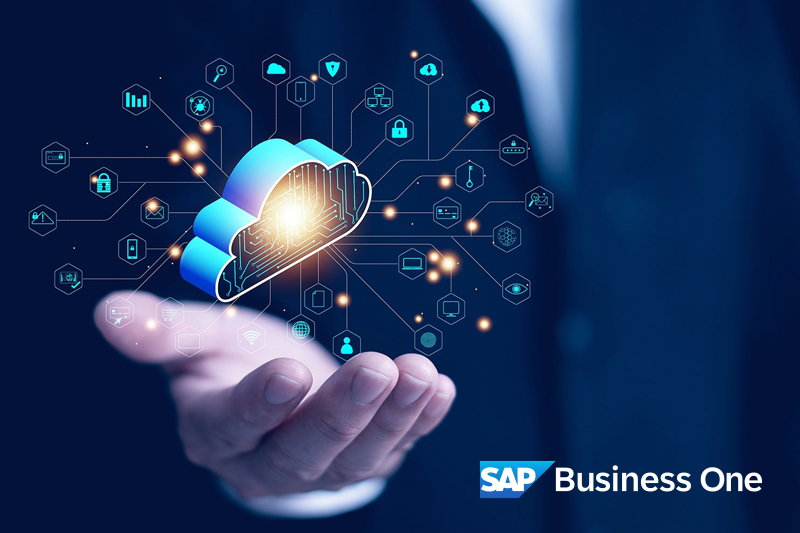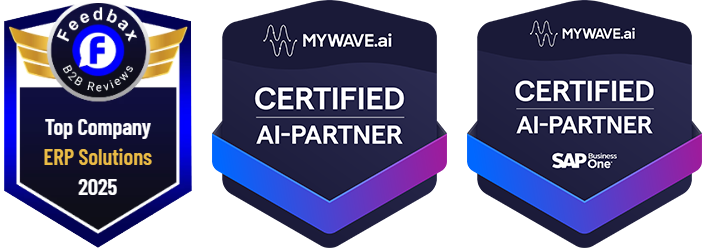In today’s interconnected business environment, the cloud has moved beyond being a competitive advantage — it is now the foundation for scalable, agile, and efficient operations. Among the many business-critical applications now hosted in the cloud, Enterprise Resource Planning (ERP) systems have emerged as a vital hub for integrating processes, managing data, and enabling intelligent decision-making.
However, with great accessibility comes a pressing concern: data security. For small and medium-sized businesses (SMEs) adopting SAP Business One Cloud, the question isn’t whether to move to the cloud, but how to ensure their most valuable asset — their data — remains secure.
This blog takes an in-depth look at how SAP Business One Cloud ensures robust data security, from encryption protocols to regulatory compliance, and why this matters more than ever in an era of sophisticated cyber threats.
-
Why Cloud Security Matters for ERP
An ERP system like SAP Business One Cloud centralises core business processes: financials, inventory, procurement, production, customer relationship management, and analytics. This means it stores and processes vast amounts of sensitive data — from customer payment details and supplier contracts to employee information and intellectual property.
In a traditional on-premise environment, businesses often rely on local servers, firewalls, and internal IT teams to protect this data. The cloud shifts these responsibilities to advanced hosting environments, but with a twist — security measures are enhanced, standardised, and continuously updated to counter evolving threats.
Cybersecurity isn’t just about preventing data breaches; it’s also about ensuring operational continuity, maintaining customer trust, and complying with international regulations.
-
The Shared Responsibility Model in Cloud ERP
Security in cloud-based ERP like SAP Business One Cloud follows a shared responsibility model:
- Cloud Service Provider (CSP) – Manages physical infrastructure security, network monitoring, system patching, and disaster recovery.
- Business/User – Manages user access controls, secure authentication, data classification, and adherence to internal policies.
This division ensures that while the provider delivers enterprise-grade security features, the business maintains control over how these features are applied within its operational framework.
-
Encryption: Securing Data at Rest and in Transit
Encryption is the backbone of cloud ERP security. SAP Business One Cloud uses Advanced Encryption Standard (AES) 256-bit encryption for data at rest, ensuring that even if unauthorised parties access physical storage, the data remains unreadable.
When data is transmitted between your ERP interface and cloud servers, Transport Layer Security (TLS) 1.2 or higher encrypts the data in transit. This dual-layer encryption ensures that confidential information — from financial records to customer databases — remains inaccessible to eavesdroppers or malicious actors.
-
Multi-Factor Authentication (MFA) and Identity Management
Access control is one of the most critical components of data protection. SAP Business One Cloud integrates with Identity and Access Management (IAM) systems to enforce:
- Multi-Factor Authentication (MFA) — requiring users to verify identity through multiple credentials (e.g., password + OTP).
- Role-Based Access Control (RBAC) — restricting data access to only those employees who need it for their specific role.
This approach mitigates risks from stolen credentials or insider threats, ensuring that unauthorised access is almost impossible without the correct identity verification.
-
Continuous Monitoring and Threat Detection
Modern ERP security doesn’t stop at preventing attacks — it must also detect and respond to threats in real time. SAP Business One Cloud benefits from continuous monitoring systems that:
- Scan for anomalous user behaviour (e.g., accessing large amounts of sensitive data at unusual times).
- Detect and block Distributed Denial of Service (DDoS) attacks before they disrupt operations.
- Use Security Information and Event Management (SIEM) tools to aggregate, analyse, and act on potential security events.
This proactive approach ensures that even sophisticated threats are neutralised before they can cause damage.
-
Compliance with Global Data Protection Standards
For SMEs operating internationally, compliance is as crucial as technical safeguards. SAP Business One Cloud aligns with multiple security and privacy regulations, such as:
- GDPR (General Data Protection Regulation) — Ensuring the lawful collection, processing, and storage of EU citizens’ data.
- ISO/IEC 27001 — The gold standard for information security management systems.
- SOC 1 and SOC 2 Reports — Validating operational controls and data protection measures.
Compliance frameworks not only ensure legal protection but also act as a benchmark for the robustness of cloud ERP security.
-
Disaster Recovery and Business Continuity
Even the most secure systems must plan for unforeseen events, whether natural disasters or infrastructure failures. SAP Business One Cloud incorporates:
- Automated daily backups stored in geographically redundant data centres.
- Recovery Time Objective (RTO) and Recovery Point Objective (RPO) targets to restore services quickly with minimal data loss.
- Failover systems to ensure 99.9% uptime, meaning your ERP remains accessible even during regional outages.
For SMEs, this translates to uninterrupted operations and minimal financial loss during unexpected events.
-
Data Segmentation and Tenant Isolation
One concern with multi-tenant cloud systems is ensuring that data from different clients remains isolated. SAP Business One Cloud uses logical data segmentation, meaning each business’s data is stored in separate, secure containers.
This prevents “data bleed” between clients and ensures that breaches in one environment cannot impact another, maintaining confidentiality at all times.
-
Secure Development Practices
Security starts even before deployment. The SAP Business One Cloud platform is built following Secure Software Development Lifecycle (SSDLC) principles:
- Code reviews and vulnerability scanning during development.
- Regular patch management to eliminate known vulnerabilities.
- Strict adherence to security best practices in APIs and integrations.
By embedding security into the development phase, potential threats are mitigated before they ever reach a live environment.
-
The Human Factor: Training and Awareness
While technical safeguards are vital, the majority of data breaches still involve human error. Businesses using SAP Business One Cloud should prioritise:
- Employee training on phishing awareness.
- Clear protocols for handling sensitive data.
- Regular reviews of access privileges.
When combined with the platform’s robust security architecture, informed users create a strong “human firewall” against cyber threats.
-
Why SMEs Can Trust SAP Business One Cloud for Data Security
For small and medium-sized enterprises, the stakes are high. A single breach can lead to financial loss, reputational damage, and regulatory penalties. SAP Business One Cloud offers a security framework designed to match — and often exceed — the standards used by large enterprises.
By leveraging multi-layered encryption, global compliance, advanced monitoring, and business continuity planning, SMEs gain enterprise-grade protection without the cost and complexity of maintaining it in-house.
-
Final Thoughts: Security as a Competitive Advantage
In a digital-first economy, data security is not merely a technical requirement — it is a strategic differentiator. Customers and partners are more likely to engage with businesses they trust, and that trust begins with safeguarding sensitive information.
By adopting SAP Business One Cloud, SMEs are not just investing in an ERP solution; they are investing in a secure, future-ready platform that supports growth while keeping their data safe.





 Applicable for Package
Applicable for Package Optional
Optional